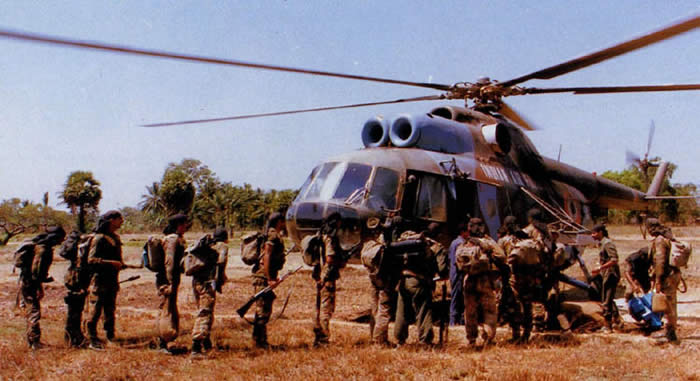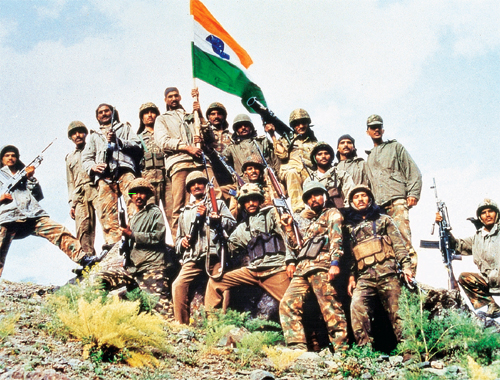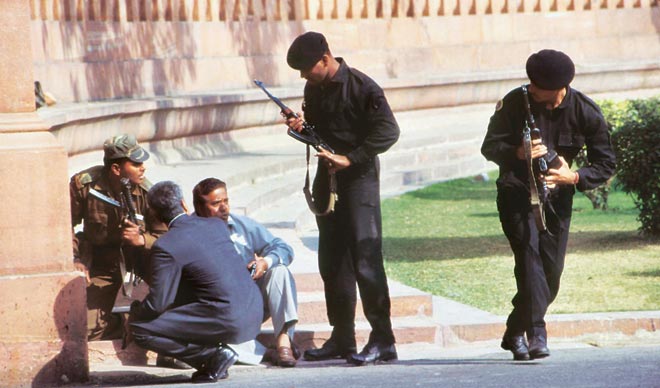4 June, 1984 marked a bloody day in the history of India. 30 years back today, Golden Temple was attacked in the name of Operation Blue Star. In order to establish control over the Harmandir Sahib Complex (The Golden building inside the complex) in Amritsar, Prime Minister Indira Gandhi ordered this operation. Operation Blue Star took the lives of about 5000 civilians excluding the military . Since Independence, the Indian Military has conducted around 50 operations during various conflicts within and outside the country. 30 years after Operation Blue Star which led to the assassination of the country’s then Prime Minister, we bring you 5 military operations which changed the course of history of India.
Operation Polo- 1948
Soon after independence the first of the major military operations took place with the aim of acquiring the last princely state of Hyderabad. In September 1948, the Armed Forces attacked the city to over throw the Nizam and succeeded. The conflict began after the last Nizam, Osman Ali Khan decided not to join either Pakistan or India after the partition. The army of the Nizam were called Razakars, known to have a bent towards Pakistan. After failed negotiations between the Nizam and India, brutality on the Hindus increased. The then Deputy Prime Minister, Sardar Patel decided to put a stop to this brutality by sending the Indian troops who succeeded within five days of their deployment.
Operation Blue Star-1984
Thousands civilians were killed, hundreds of Sikhs resigned from government jobs and the then Prime Minister, Indira Gandhi was assassinated as a result of this military operation. Operation Blue Star which took place between 3-8 June, 1984, had one of the worst effects on country. This one military operation led to the 1984 anti-Sikh riots, the effects of which are still widely quoted during political rallies. The army used heavy artillery to execute this operation. The credibility of the entire governance of the country was questioned because of the drastic effects Operation Blue Star.
Operation Pawan- 1987
In October 1987, Operation Pawan was executed successfully by taking control of Jaffana from the Liberation Tigers of Tamil Eelam(LTTE). The LTTE had adopted the road of violence to achieve their goal of a separate Tamil state. This operation lasted for a fortnight and resulted in the loss of over 200 soldiers and unaccounted number of civilians. For years the issue of Sri Lankan Tamils results in death of innocent civilians eventually the assassination of yet another Prime Minister Rajiv Gandhi in 1991.
Operations Vijay- 1999
During the Kragil war, Operation Vijay was executed to send back the infiltrators from Pakistan who had initiated the war. Operation Vijay, which means Victory in Hindi is another name given to the Kargil War honoring the victory of the war. Operation Vijay or Kargil war took place after the infiltration of Pakistani soldiers and Kashmiri militants to the Indian side of the Line of Control (LOC). This was one of the longest Operations executed by the Armed Forces which lasted for about two months from May 1999 to July 1999. It eventually resulted in the Pakistani forces retreating after the loss of hundreds of soldiers from both sides.
Operation Parakram- 2001
Operation Parakram was a result of the terrorist attacks on the Indian Parliament on 13 December, 2001. Though denied by Pakistani officials, the attacks were allegedly conspired by two Pakistan-based terror groups fighting Indian administered Kashmir, the Lashkar-e-Taiba and Jaish-e-Mohammad , both of whom India has said are backed by Pakistan’s ISI. This operation is also known as the India Pakistan Standoff 2001-02. The seven month long operation was one of the last Indo-Pakistan conflicts which led to operations on such a large scale.







